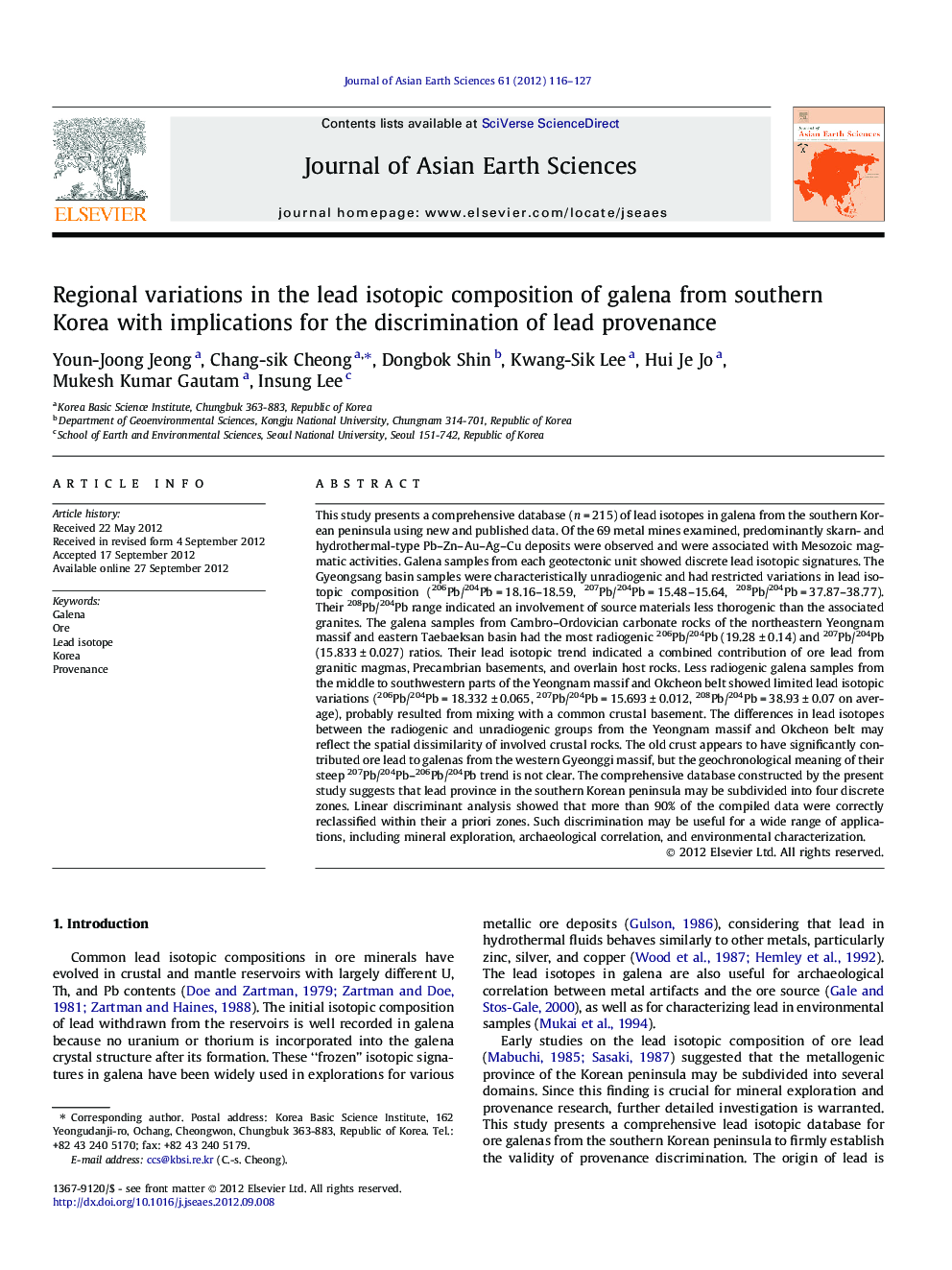| Article ID | Journal | Published Year | Pages | File Type |
|---|---|---|---|---|
| 4731151 | Journal of Asian Earth Sciences | 2012 | 12 Pages |
This study presents a comprehensive database (n = 215) of lead isotopes in galena from the southern Korean peninsula using new and published data. Of the 69 metal mines examined, predominantly skarn- and hydrothermal-type Pb–Zn–Au–Ag–Cu deposits were observed and were associated with Mesozoic magmatic activities. Galena samples from each geotectonic unit showed discrete lead isotopic signatures. The Gyeongsang basin samples were characteristically unradiogenic and had restricted variations in lead isotopic composition (206Pb/204Pb = 18.16–18.59, 207Pb/204Pb = 15.48–15.64, 208Pb/204Pb = 37.87–38.77). Their 208Pb/204Pb range indicated an involvement of source materials less thorogenic than the associated granites. The galena samples from Cambro–Ordovician carbonate rocks of the northeastern Yeongnam massif and eastern Taebaeksan basin had the most radiogenic 206Pb/204Pb (19.28 ± 0.14) and 207Pb/204Pb (15.833 ± 0.027) ratios. Their lead isotopic trend indicated a combined contribution of ore lead from granitic magmas, Precambrian basements, and overlain host rocks. Less radiogenic galena samples from the middle to southwestern parts of the Yeongnam massif and Okcheon belt showed limited lead isotopic variations (206Pb/204Pb = 18.332 ± 0.065, 207Pb/204Pb = 15.693 ± 0.012, 208Pb/204Pb = 38.93 ± 0.07 on average), probably resulted from mixing with a common crustal basement. The differences in lead isotopes between the radiogenic and unradiogenic groups from the Yeongnam massif and Okcheon belt may reflect the spatial dissimilarity of involved crustal rocks. The old crust appears to have significantly contributed ore lead to galenas from the western Gyeonggi massif, but the geochronological meaning of their steep 207Pb/204Pb–206Pb/204Pb trend is not clear. The comprehensive database constructed by the present study suggests that lead province in the southern Korean peninsula may be subdivided into four discrete zones. Linear discriminant analysis showed that more than 90% of the compiled data were correctly reclassified within their a priori zones. Such discrimination may be useful for a wide range of applications, including mineral exploration, archaeological correlation, and environmental characterization.
► Lead isotopic compositions are reported for galenas from the southern Korean peninsula. ► Galenas from each geotectonic unit show discrete lead isotopic signatures. ► Four discriminated zones are recognized for the lead province.
